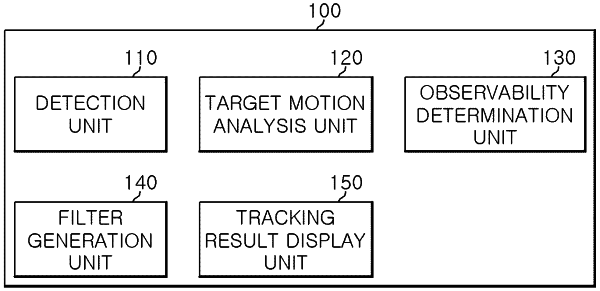| CPC G01V 11/00 (2013.01) | 14 Claims |

|
1. A three-dimensional target motion analysis method using a line array sensor performed by a three-dimensional target motion analysis apparatus on a ship, the method comprising:
detecting, using the line array sensor, a first three-dimensional region where a target is located;
defining a three-dimensional coordinate system of the detected first three-dimensional region, wherein the three-dimensional coordinate system includes x, y, and z axes with a center of the three-dimensional target motion analysis apparatus as an origin, wherein the x-axis represents a moving direction of the ship, wherein the y-axis represents a direction to generate concentric circles where a plurality of filters are positioned, and wherein the z-axis represents a direction of a depth of the three-dimensional target motion analysis apparatus;
acquiring a first conic angle between the target and the three-dimensional target motion analysis apparatus from the line array sensor at a predetermined first time point;
acquiring first attitude information including an attitude angle, a position, and the depth of the three-dimensional target motion analysis apparatus at the first time point; and
analyzing a three-dimensional motion of the target by estimating a three-dimensional position of the target at the first time point based on the first conic angle and the first attitude information,
wherein analyzing the three-dimensional motion of the target includes:
generating a first filter on a surface of the first three-dimensional region corresponding to the obtained first conic angle,
with respect to the generated first filter, setting different state vectors indicating a position and a velocity of the first filter using the first attitude information, and
estimating a first position, which is a position of the target at the first time point, based on the state vectors of the first filter;
determining an observability of the target based on the state vectors; and
displaying a message reflecting the determined observability so as to enable a user to adjust the moving direction of the ship based at least in part on the message.
|